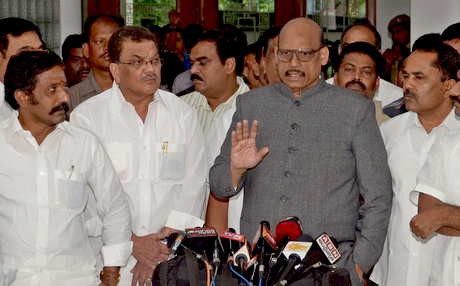 Hyderabad, Aug 1: Ministers and legislators from Rayalaseema and Andhra regions of Andhra Pradesh Thursday decided to resign to protest Congress party's decision to carve out Telangana state.
Hyderabad, Aug 1: Ministers and legislators from Rayalaseema and Andhra regions of Andhra Pradesh Thursday decided to resign to protest Congress party's decision to carve out Telangana state.
As many as 15 ministers and 26 legislators of the Congress party decided to submit resignations by the evening.
The ministers from Seemandhra (Rayalaseema and Andhra) met at the ministers' quarters here to chalk out their future course of action.
Senior leader J.C. Diwakar Reddy told reporters after the meeting that the ministers would meet Chief Minister N. Kiran Kumar Reddy to submit their resignations. The legislators will submit their resignations to state assembly speaker and council chairman.
Diwakar Reddy said the leaders who attended the meeting also decided to participate in the people's agitation against state's division.
The leaders demanded that Congress Working Committee (CWC) reconsider its decision to carve out Telangana state.





Comments
Add new comment